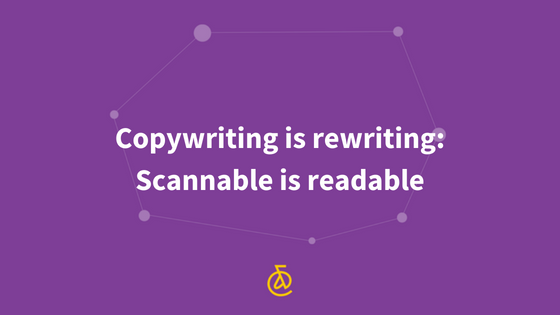“Easy reading is damn hard writing” wrote the American novelist Nathaniel Hawthorne. This holds particularly true for web writing, that is writing for an environment in which reading is a particularly difficult activity.
As Jakob Nielsen wrote in a seminal article, more than ten years ago, readers on the web often don’t read, they simply scan content and pick out individual words and sentences.
So, the best way to create an easily readable text for a web reader is to make it scannable. Nielsen proposed six techniques to achieve this goal:
- using highlighted keywords (e.g. hypertext links, bold or colored text)
- using meaningful sub-headings (including relevant keywords)
- using bulleted lists (as this one)
- writing one idea per paragraph
- adopting the inverted pyramid style (i.e. starting with the conclusion)
- using half the word count (or less) than conventional writing
Although Nielsen’s article was written in the past century, these techniques still apply to many types of content, as well as to different devices. For example, Neil Patel introduces mobile-friendly writing techniques that are partly similar to Nielsen’s: particularly interesting is the bite, snack and meal technique that I will cover in the next post of this series, and in general the idea of content chunking, i.e. offering small, meaningful and visually distinct paragraphs that can be easily read on a mobile screen.
Writing a scannable text indeed requires “damn hard writing” particularly with regard to content structure, but if “easy reading” is our objective we need to rewrite our content in order to adapt it to the harsh environment of our readers.
By our WiseGuy Andrea Spila

